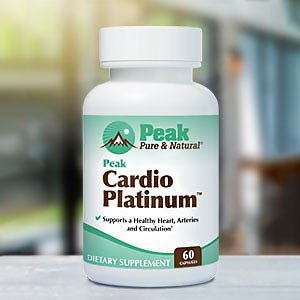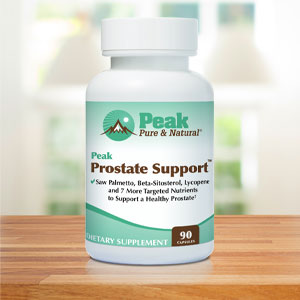Get Easy Health Digest™ in your inbox and don’t miss a thing when you subscribe today. Plus, get the free bonus report, Mother Nature’s Tips, Tricks and Remedies for Cholesterol, Blood Pressure & Blood Sugar as my way of saying welcome to the community!
Live near a golf course? Your risk for Parkinson’s may double

I’ve never been much of a golf player myself. But I know plenty of people who love spending time on the golf course.
Every weekend when the weather is nice, you can find them there, walking across the pristine, perfectly manicured courses as they play.
A few years ago, I became aware that some of the pesticides used to keep that grass lush have been linked with Parkinson’s disease, a well-known neurological condition for which there is no cure.
It’s information I’m always quick to share with any of my golf-playing friends. Some have been a little skeptical, considering the cardiometabolic benefits of golf, but reassured me that they avoid playing on the course immediately after pesticide applications.
Now, new research not only reinforces the potential danger active golfers face, but has revealed an association between just living in close proximity to a golf course and more than double the risk for Parkinson’s…
Golf course proximity and Parkinson’s
Parkinson’s disease has been tied to a number of environmental contaminants, including:
- Solvents, like the dry cleaning and degreasing chemical perchloroethylene (PCE), also known as tetrachloroethylene, and trichloroethylene that can contaminate drinking water;
- And herbicides/pesticides like paraquat, simazine, atrazine and lindane — some of which have been used to treat golf courses for years.
Despite this, very few studies have looked at the relationship between pesticide exposure from golf courses and Parkinson’s.
So, a team of U.S. researchers examined 139 golf courses in southern Minnesota and western Wisconsin, and evaluated 419 Parkinson’s disease cases and 5,113 controls, matched for age and sex, while adjusting for variables including whether the location of the golf course was urban or rural.
Their study found that living within one mile of a golf course was associated with more than double the chances of developing Parkinson’s when compared with living more than six miles away. The odds of Parkinson’s decreased by 9 percent for every one-mile increase in distance from a golf course, up to 18 miles.
That’s not all. Those living within water service areas with a golf course had nearly double the odds of Parkinson’s compared with individuals in water service areas without golf courses, and 49% higher chance of Parkinson’s compared with participants with private wells.
Vulnerable groundwater regions at high risk
Living in water service areas with a golf course in vulnerable groundwater regions was associated with 82 percent higher odds of contracting Alzheimer’s compared to those in nonvulnerable groundwater regions.
A vulnerable groundwater region is any region with coarse-textured soils, shallow bedrock or karst geology.
“Our study found that both distance from a golf course and karst topography were independently associated with risk of Parkinson’s disease,” study lead Dr. Brittany Krzyzanowski of the Barrow Neurological Institute in Phoenix told MedPage Today.
“Karst topography describes a region with limestone bedrock that slowly dissolves over time, creating underground voids that allow water from the surface to move more rapidly through it,” she added. “This means that pesticides applied to grass or crops can more readily move into the groundwater supply after a rain.”
Krzyzanowski added that more research is needed to fully understand the risks, and that the researchers plan to replicate the study using a nationwide dataset.
Until then, the findings suggest that people living near golf courses should be aware of the risks and take steps to minimize exposure to these pesticides. Krzyzanowski suggested asking the neighboring golf course about their spraying schedule and staying indoors and away from the course during those times.
She also suggested using a carbon water filter to reduce the risk of contamination from drinking water—advice also offered also by the American Parkinson Disease Association.
Another potentially helpful tip is to consider supplementing CoQ10 and PQQ. Together, these two enzymes help protect the brain’s neuron cells by boosting mitochondria and reducing oxidative stress.
Pollution particles tend to hitch a ride on these neuron cells and travel directly to your cerebellum, so anything that can give them an added boost is a good idea.
Editor’s note: Do you know that poor gums and teeth are linked to the number one killer in America? Not to mention kidney disease… rheumatoid arthritis… Parkinson’s disease… depression… and so much more. Click here to discover America’s Hidden Dental Health Crisis: How to protect yourself and your family from this dangerous public health peril!
Sources:
Risk of Neurologic Disorder Rises for People Who Live Near Golf Courses — MedPage Today
Proximity to Golf Courses and Risk of Parkinson Disease — JAMA Network Open














